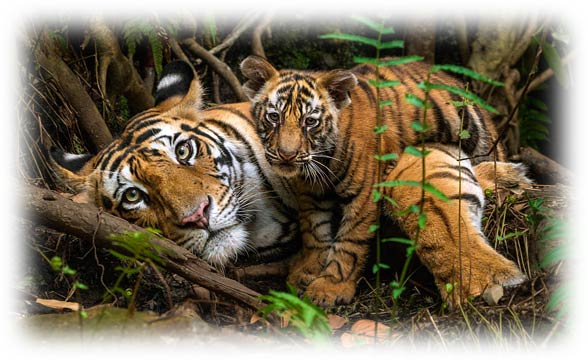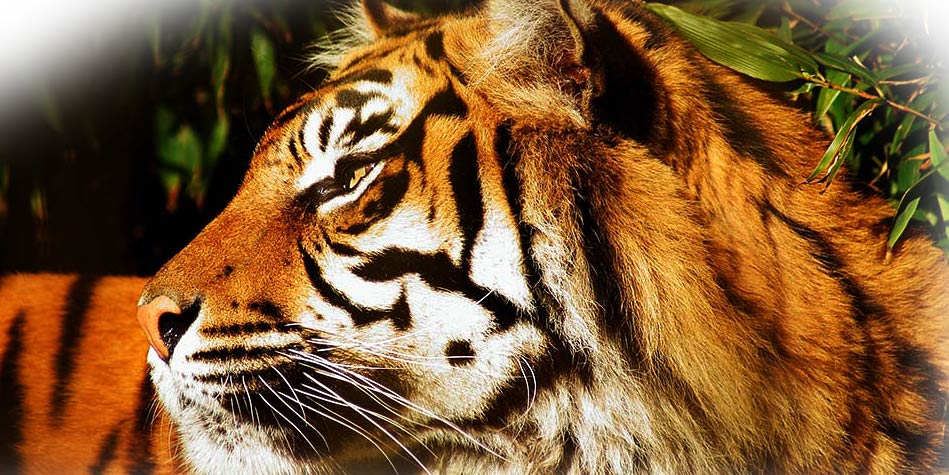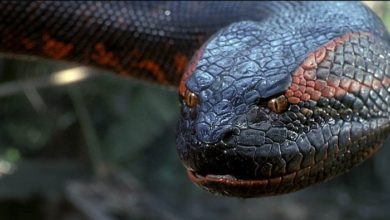Indochinese tiger (Panthera tigris corbetti)
Deep in the lush forests of Southeast Asia, a magnificent predator roams the jungle with stealth and grace. The Indochinese tiger (Panthera tigris corbetti) is a breathtaking sight, with its distinctive golden fur and striking black stripes. This subspecies of tiger is one of the most charismatic big cats in the world, known for its powerful roar and elusive nature. With a unique history and culture, the Indochinese tiger is not only a magnificent creature of the wild, but also a symbol of strength and resilience for the people who share its habitat. From its importance in local mythology to its role in conserving biodiversity, the Indochinese tiger is a captivating species that continues to inspire and captivate us with its beauty and power.
Everyone knows Bengal, Siberian or Sumatran tigers, and if they don’t, they at least have heard about them :). However, only few people know that there is a bit more of tiger subspecies. Today we are presenting critically endangered subspecies of tiger – Indochinese tigers – that systematically lose their battle for life with people…
Tigers have been losing their fight for survival for years, finding themselves on the verge of extinction. Although each subspecies has a different situation regarding its population, none of them can feel safe.
How long are we going to be able to admire these big and dignified cats – we don’t know. But we know that people bear the greatest responsibility for their endangerment.
Classification
- Class: Mammalia
- Order: Carnivora
- Family: Felidae
- Genus: Panthera
- Species: Tiger (P. tigris)
- Subspecies: Indochinese tiger (P. tigris corbetti)
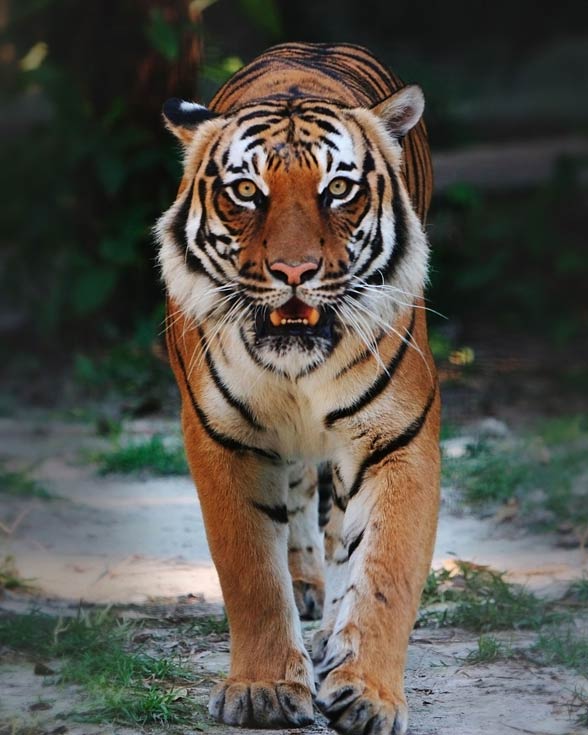
Occurrence and habitats
In the past, these tigers lived in the Indochina region of Southeastern Asia, particularly in Laos, China, Thailand, Vietnam, Burma and Cambodia. Over half the population inhabits the Western Forest Complex in Thailand, mainly in the Huai Kha Khaeng Wildlife Sanctuary (reserve).
The tiger’s habitats include tropical and subtropical moist broadleaf forests, that provide the animals with camouflage and proper hunting areas, that are appropriate to the tiger’s lifestyle (also the tendency of living in mountainous areas) and food preferences. Today, however, we have no evidence that Cambodian, Chinese and Vietnamese populations breed.
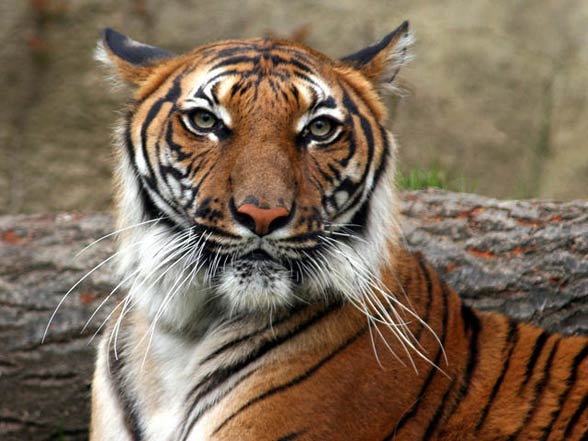
Characteristics
Appearance
Little has been learned about this mysterious loner, but it is known, that Indochinese tiger is smaller than other subspecies – Amur and Bengal tigers. It’s distinguished form its striped relatives by its fur pattern – the stripes are narrower and darker, and the orange color is more intensive, sometimes described as golden.
The body length of male tigers is between 255 and 285 cm (8ft 4in – 9ft 4in), and their weight is 150-200 kg (330 – 440 ft). Female tigers are 230-255 cm (7ft 7in – 8ft 4in) long and weigh 100-130 kg (220 – 286lb).
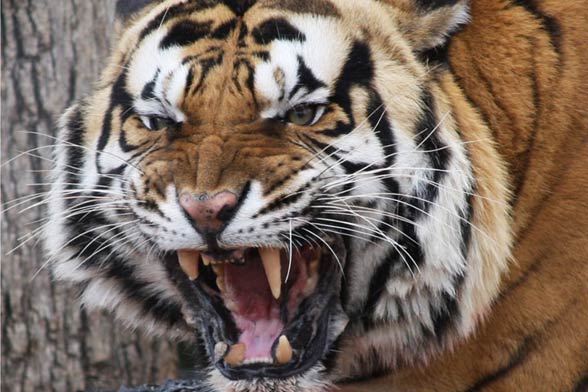
Diet
Primarily, it hunts large and medium ungulates, including sambar deer, boars, serows. The tiger also feeds on magnificent banteng and young gaur. However, in the most regions of occurrence the populations of bovidae have decreased dramatically, and some of the species have gone completely extinct, for example, the kouprey or the Schomburgk’s deer; only here and there you can see the Eld’s deer, the Indian hog deer and the Asian buffalo.
In this disheartening situation, the Indochinese tigers have to hunt smaller animals, for example, muntjacs, porcupines, macaques and hog badgers. Small prey is hardly enough to satisfy the great energy requirements of the predators, therefore, it is impossible for them to reproduce. This factor, along with poaching, is the main cause of the extinction of the tiger subspecies in the whole range of distribution.

Sad statistics – endangered tigers
In 2007, the population of the Indochinese tiger was lower than 2,500 individuals, and today it has been estimated to 600 to 650 tigers in the wild. Therefore, it may be soon classified from being endangered to critically endangered.
Detailed information and size
Indochinese tiger (Panthera tigris corbetti)
- Body length with tail:
- males: 255-285 cm (8ft 4in – 9ft 4in)
- females: 230-255 cm (7ft 7in – 8ft 4in)
- Weight:
- males: 150 – 200 kg (330 – 440 ft)
- females: 100 – 130 kg (220 – 286lb)
- Lifespan: 15 – 26 years (in captivity longer than in the wild)
- Population: 600 – 650 (in 2015); other estimates indicate that their population in the wild is 314 – 357
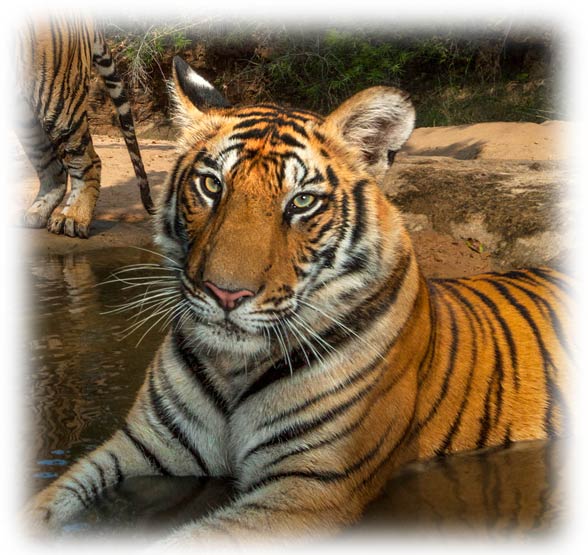
Indochinese tigers – interesting facts
- Until recently, the Malayan tiger has been classed as the Indochinese subspecies, but it has changed after DNA tests.
- Tigers are the victims of poachers who work for people dealing with traditional folk medicine – it is one of the main factors causing the extermination of these beautiful predators.
- Because of the decreasing number of Indochinese tigers, the phenomenon of inbreeding (breeding between closely related individuals) occurs within the subspecies. This situation caused the weakening of genes, decrease in the number of spermatozoa, infertility, and in some cases, congenital defects, such as cleft palate, strabismus and lordosis.
